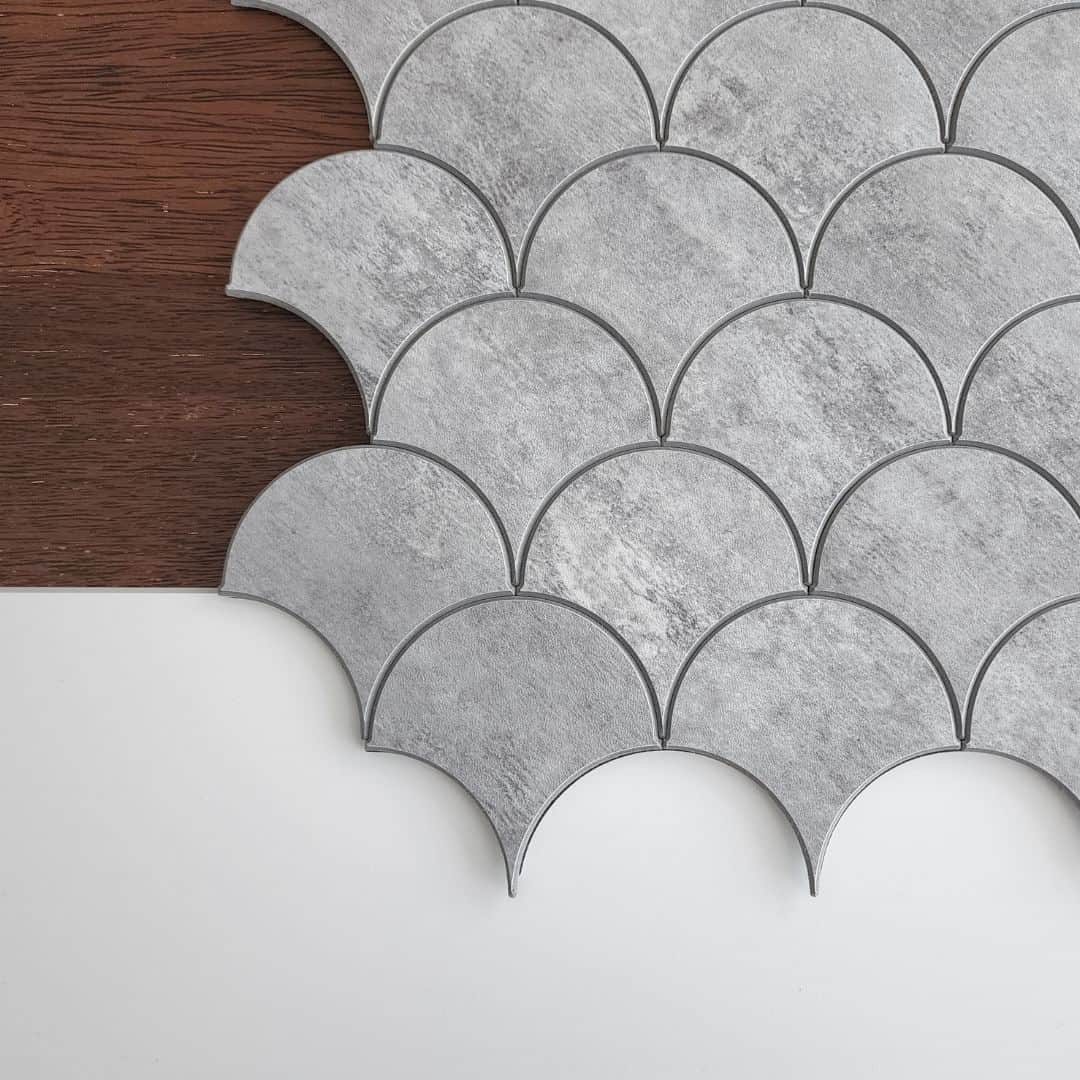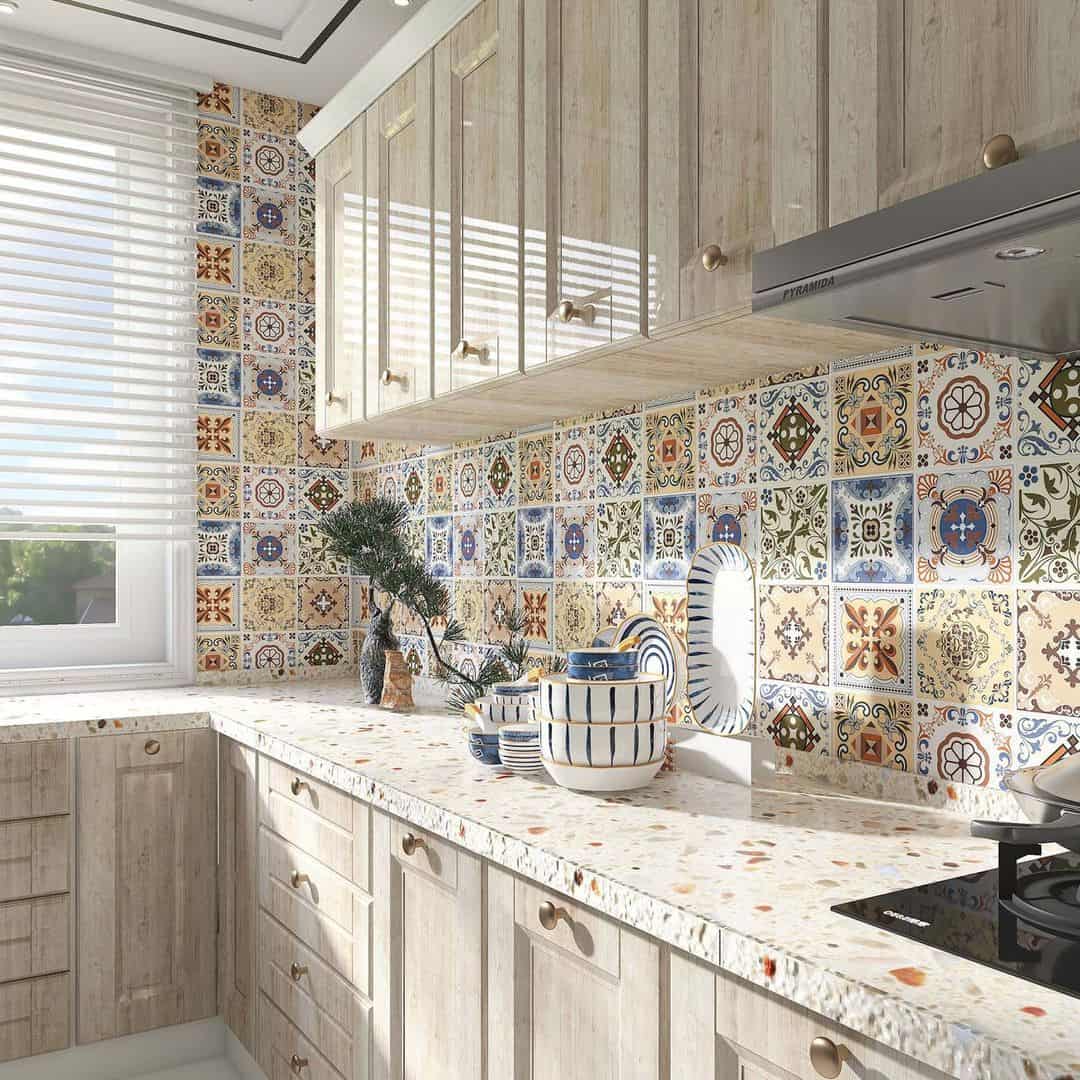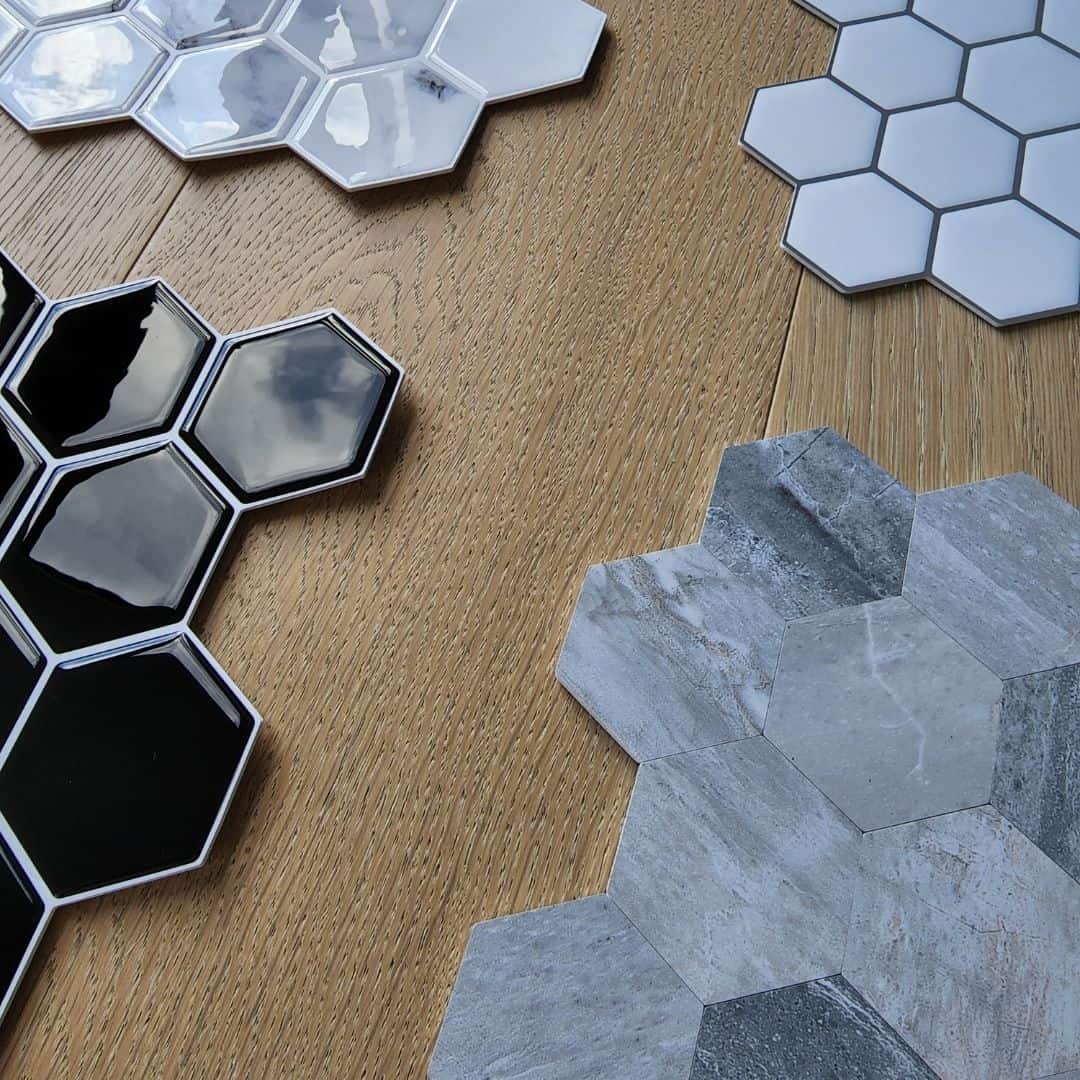Do you wish to renovate your kitchen backsplash but don’t want to remove the current tiles?
Well, peel-and-stick tile offers you an inexpensive way to improve your floors, bathroom walls, and kitchen backsplash.
They are easy to install, and you do not have to deal with the mess of traditional tile backlashes. And the best part? You can put peel-and-stick tile over the existing backsplash.
In this guide, we will discuss everything about peel-and-stick backsplash to help you determine if it’s the DIY project for you.
Table of Contents
How Does Peel and Stick Tile Work?
Peel and stick tile can bring life to any old floor or space, including basements, bathroom walls, or laundry rooms. It’s a type of tile that features an adhesive back cover and often mimics the look of porcelain or ceramic tiles.
Unlike traditional tiles, peel-and-stick tiles are relatively easy to install. Simply peel the back coverings and stick the tiles to a smooth surface. The adhesive on the back will hold the new tile in place. What’s more, they eliminate the need for tools (hammer, tile cutter, and others) or mortar, grout, and other messy substances.
These self-adhesive tiles are usually used as a temporary solution or for small DIY projects. For instance, renters can use them to bring life to their living space, making no permanent changes to the property.
Types of Peel and Stick Tile

As mentioned above, peel-and-stick tiles mimic traditional tiles. That means you can choose from a virtually endless list of peel-and-stick tiles based on the material and finish. The most common types of peel-and-stick tile backsplashes include:
1. Vinyl tile
Vinyl tile is the most common option and is made with plastic backing or foam. Peel and stick vinyl tile clean easily, which makes it perfect for high-splatter kitchens, washing areas, or showers. Besides, these tiles come at an affordable price tag.
2. Metal tile
Yes, you have heard us right. These tiles are made from lightweight metal like aluminum and add a modern look to any space.
3. Glass tile
Peel and stick glass tiles give a room a trendy look and are often used for backsplashes or accent walls.
4. Mosaic tile
Manufacturers usually use small pieces of stone, ceramic, or glass to make these tiles. Mosaic tile will add a decorative element to your kitchen or bathroom. They look more like terrazzo.
5. Marble tile
As the name suggests, the tile features real marble.
6. Stone tile
Made from actual stones, peel-and-stick stone tiles offer you the slate backsplash you desire. However, you might require special tools to cut these tiles to size. You might also risk potential damage to your wall when removing a stone wall tile.
7. Decorative tile
Offer several decorative designs to choose from.
8. Textured tile
These tiles come with a textured surface, which lends your home a more natural appearance.
9. 3D tile
The peel-and-stick tile features a 3-dimensional design that gives any space a realistic and mesmerizing vibe.
Are Peel and Stick Tiles Any Good?
To determine if getting a peel-and-stick tile is a good move, let’s look at the pros and cons of these tiles.
Pros
- Budget Friendly
Peel and stick tiles can cost anywhere from $1 and $5 per square foot. So, if you want to install the tiles in a 200 -square foot room, expect to spend between $200 to $1000. Although the cost is similar to traditional tiles, you will save on expenses like tools, grout, and tile mortar. And if you install the tiles yourself, you can eliminate labor costs.
- Easy Installation
You only need a steady hand, box cutters (or scissors), and tape measure to install these tiles. When you want a different design, you can peel off the stuck tile and replace it hassle-free.
- Variety
As said earlier, these tiles come in a variety of materials, finishes, and designs that can complement your home interior design.
- Durability
High-quality peel-and-stick tiles can last up to 25 years. But their lifespan will boil down to how well they are installed and maintained.
Cons
- Inferior looks
Like with every product, you get what you pay for. So, if you opt for low-quality, cheap peel-and-stick tiles, expect inferior looks.
- The adhesive can wear down
Over time, the adhesive on the tiles can wear down, especially when installed in areas with lots of moisture or traffic.
How to Put Peel and Stick Tiles Over Existing Tile?
The steps below will help you install peel-and-stick tiles over existing tiles successfully:
1. Clean The Surface
Like any tilling project, ensure the existing tile surface is in an excellent state. For the success of the project, the surface of the existing tiles needs to be clean, smooth, and free of imperfections.
Remove any grime, dirt, dust, or debris on the surface that could affect the adhesion of the new tile. If there are any dents, cracks, or uneven areas on the surface, repair them or level the surface before proceeding. This may include adding a backer board or sanding.
2. Measure the Area You Want to Apply the New Tiles
Take the exact measurement of your room and mark the existing tile surface accordingly. This will help you determine the best layout and if you have enough tiles to cover the surface.
Begin by measuring the width and length of the area you want to install the peel-and-stick tile. Next, draw a horizontal chalk line across the width of the surface. Finish by drawing vertical lines along the length of the area using a ruler and chalk.
3. Peel and Stick Tile Installation
Align the first time with your chalk line (reference line). Peel off its backing and press it firmly on the surface. Repeat the process until all the peel-and-stick tiles cover the surface.
Sometimes, you might need to cut the tiles using a utility knife or sharp scissors to ensure they fit the corners and around fixtures accurately. It’s also wise to work in small sections and to use a level or straightedge to ensure each tile aligns well.
4. Let The Tile Sit Overnight
After installing the tiles successfully, press them down firmly to create a strong bond with the surface. Allow the peel-and-stick backsplash to sit for 24 hours before using the surface.
Things to Consider When Putting Peel and Stick Tile Over Tile

1. The New Tiles Add a Layer to The Surface
Whether installing peel-and-stick tiles on the floor or bathroom wall, remember they can raise the height or width of the surface. This can cause problems with doorways or other areas where surfaces meet. This rings true if the existing tile is raised. The best solution to this problem is to use thinner peel-and-stick tiles.
2. Tile Design
Peel and stick tiles comes in a variety of color, designs, and patterns. Ensure you opt for tiles that complement your home décor. But remember, the peel-and-stick tiles are placed on top of existing tiles. As such, the design of the existing tile will still be visible to a certain degree. This could affect the appearance and feel of the room. Therefore, select a peel-and-stick backsplash that matches the existing tile.
3. Surface conditions
For the best result, the surface needs to be clean, and free from grime, coatings, and residues. Another thing, ensure it’s smooth by sanding it with a specific grit. Without proper wall or floor preparation, you will end up with a less-than-professional-looking tile backsplash.
4. Adhesive strength
Be sure the adhesive on the new tile is strong enough to bond with the existing surface (whether tile or concrete).
5. Grout Lines
Make sure the peel-and-stick tiles align accordingly with the grout lines of existing tiles.
6. Moisture issues

Most peel-and-stick tiles are designed to be water-resistant. But unlike traditional tiles, these tiles have some spaces where they meet since they don’t use grout or cement backboard. That means water can enter these vulnerable spaces and damage the tiles.
7. You only get one chance
These self-adhesive tiles have only one job–to adhere to surfaces. And they excel at their job. That means if you stick and new tile slightly askew, you cannot reposition it. Unless you opt for removable peel-and-stick tile. However, this is not a big problem if you have a steady hand and patience.
8. Professional help
In case of any doubts about peel-and-stick tile installation, it’s wise to consult a professional for advice.
Conclusion
Yes! You can put peel and stick tile over a tile. However, ensure that you properly prepare the surface before installing the new tiles. Remember to factor in the compatibility, design, and the tiles’ adhesive strength.
Peel and stick tiles offer a great way to reinvent your space. Plus, they help you save money and time. However, they can never compare to traditional tiles. They only act as a quick fix or temporary solution, especially for rental properties or minor projects.
Nevertheless, these tiles save you from the hassle of dealing with messy mortar and grout. So, you got nothing to lose.
Do you have any questions related to this topic? Tell us in the comment section below.
are you able to grout regular peel and stick tiles?